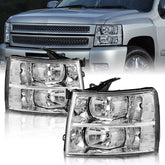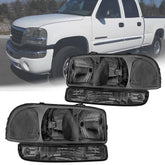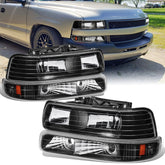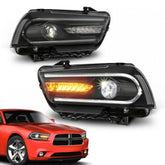Is roof rack safe?
Whether you are an outdoor sports enthusiast or a daily commuter, when you want to expand your vehicle's storage space, is a roof rack the first piece of equipment that comes to mind? Roof racks are very useful, providing extra space for road trips, sports equipment, and outdoor adventures. Allowing you to easily carry and transport camping equipment, mountain bikes, large luggage, etc., without squeezing your car's interior space and causing discomfort to your trip, making your adventure more enjoyable.
Although roof racks are very useful, they also pose some risks to your vehicle and even your safety if they are not installed and used properly. This article explores whether roof racks are safe and provides practical advice on installation and safe driving practices.

How to properly install your roof rack?
Verify vehicle and rack compatibility
First, confirm that the roof rack is compatible with your vehicle model and roof type. Some vehicles come with factory-installed roof rails or specific attachment points, while others require a specific type of rack system. Check your vehicle manual and consult the rack manufacturer to ensure a safe fit. For example, if you own a sedan without roof rails, you'll need a roof rack system designed for exposed roofs and with door frame clips.
Assemble and inspect all rack parts
Unbox and lay out each part of the roof rack, checking for any missing or damaged parts. Take the time to read the instruction manual carefully. Assembly usually includes various components, such as crossbars, feet, and connecting clips. Inspect each component for wear, cracks, or rust, as any imperfections may compromise the stability of the rack.
Gather necessary tools
Use the recommended tools listed in the rack instructions. Many racks include a basic wrench, but some installations may require additional tools, such as a torque wrench, to tighten the bolts to the correct specifications. Use a torque wrench to secure the crossbars and avoid under-tightening or over-tightening for optimal security.
Position the Rack Correctly
Place the roof rack in a specific location according to the manufacturer's instructions. This spacing will be specified in the instructions and will ensure even weight distribution. Many racks have adjustable crossbars that allow for flexible positioning depending on your load. If you need to carry two bikes, adjusting the crossbars can provide a stable base for the bikes.

Tighten all bolts and clamps securely
Use the tool to tighten the bolts and clamps. If torque specifications are provided, follow them carefully, as incorrect torque can cause the frame to loosen or cause damage. Check that all components, including crossbars and connecting clamps, are securely in place.
Double-check installation before every trip
Check your roof rack and loading security every time you travel, as vibrations and weather can cause parts to come loose. Regular inspections prevent unexpected movement while on the road and keep your rack and vehicle in top condition.
Proper installation minimizes risk, enhances vehicle stability, and lets you focus confidently on the journey ahead.
How to drive safely with a roof rack?
Driving safely with a roof rack requires several considerations to ensure your safety and the safety of other road users. Here are the key points to keep in mind:
Watch for strong winds
Loading a roof rack in windy or adverse weather conditions is risky. Strong winds can make driving with a roof rack difficult at highway speeds, requiring you to pay more attention to the steering wheel. If the wind is too strong, stop driving and wait for the wind to die down.
Increase the following distance
Due to the effect of inertia, when you increase the weight of the vehicle, it becomes difficult to stop while you are driving, and you need a longer time and distance to brake. Therefore, in this case, you need to increase the distance between you and the car in front of you so that you have enough time to react to sudden stops or turns.

Check the load capacity
When you decide to make the most of your roof rack, it's tempting to add a few extra items. However, roof racks are not infinitely stackable, and anything over their weight limit can be a serious hazard. Exceeding the maximum load on your roof rack can have several negative effects on your vehicle, including increased wind resistance, reduced fuel efficiency, and even the possibility of your vehicle tipping over when cornering.
Most roof racks have a maximum weight capacity, which you should never exceed. Overloading your rack can lead to decreased vehicle stability, impaired braking, and increased stopping distances. Exceeding the weight limit can also damage the rack itself or the roof of your vehicle. When your roof rack is not in use, remove all gear and store it in a safe place.
Distribute weight evenly
Make sure the load is balanced on your roof rack to avoid movement that affects the handling of your vehicle. Place heavier items in the middle and lighter items on the edges. With too much weight forward on your roof rack, your vehicle will lunge forward when you brake. With too much weight too far back, it will feel like something is pulling your vehicle. Evenly distribute the weight when loading your roof rack, and you will enjoy a smooth ride during your trip. Dangers occur when people don't evenly distribute the weight on their roof racks.
Beware of height restrictions
If you haven't used a vehicle with a roof rack installed, you may have become accustomed to ignoring the "low ground clearance" signs. When you fill your roof rack with tools and equipment, your vehicle's overall height increases. You want to avoid collisions or damage in low-clearance areas such as parking lots, drive-throughs, and bridges. You need to lower the height of the vehicle as much as possible. It's best to measure the actual height of the vehicle so that you can avoid those low-clearance areas that cannot be crossed in advance.
Adjust your driving speed and style
When you're driving on the highway, your wind resistance increases rapidly as your speed increases and you carry a roof rack. The added wind resistance can affect your vehicle's stability. Therefore, it's best to drive at a moderate speed, staying 10 mph below the speed limit, so you can have better control of the vehicle. Also avoid sudden lane changes and sharp turns, which can cause the vehicle to tilt and sway.
In addition, the added height and weight will change the center of your vehicle, so you may need to adjust your driving style, such as turning with a larger turning radius to accommodate the added height and making sure you don't accidentally hit overhanging branches or buildings. Finally, stay alert to the road conditions and be prepared for obstacles that may appear suddenly.
Secure your load
Properly securing your load can make your trip safer. Use high-quality straps or ropes to secure items to the rack, making sure everything is firmly secured and there are no loose items. Otherwise, loose cargo can easily fall out during a bumpy ride or sudden stop. If you are loading large items, use a roof box or protective mats to prevent scratches or damage to your items and the vehicle. Before hitting the road, do a quick circle around the vehicle and give the roof rack a good shake to double-check that all cargo is secure. During breaks on long trips, regularly check the tightness of the straps, as vibrations from driving can loosen straps over time. If possible, cover the cargo with a tarp or protective cover to protect it from wind and rain and reduce drag.

Using the roof rack wind deflector
The Roof Rack Wind Deflector reduces wind noise and improves aerodynamics for increased fuel efficiency and stability while driving. It is mounted at the front of the roof rack and directs wind away from the rack, helping to minimize drag and lift on the load for a smoother ride.
Plan your route
When you use a roof rack while driving, you can plan your route ahead of time to improve your driving safety. Determine if there are low-clearance areas such as bridges or drive-throughs along the way. Some GPS systems and map apps can help you avoid these obstacles. If you are carrying large or lightweight items such as kayaks or bicycles, be careful about the effect of wind on your driving. In addition, avoiding busy urban areas with sharp turns or heavy traffic can make your journey safer and more relaxing. Thoughtful planning can greatly improve the efficiency of using a roof rack.
Conclusion
A roof rack is safe when you install and use it correctly. Taking a few precautions can help you enjoy the convenience of a roof rack while staying safe on the road.
Featured Products
- $116.99
$124.45- $116.99
- Unit price
- / per
- $96.99
$99.99- $96.99
- Unit price
- / per
- $96.99
- $96.99
- Unit price
- / per
- $368.99
$435.77- $368.99
- Unit price
- / per














